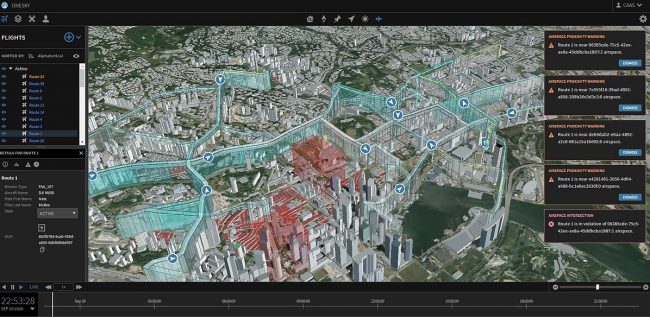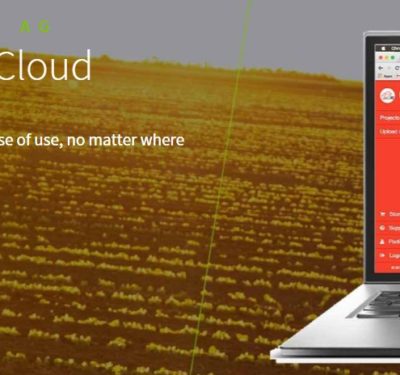OneSky announced its part of a collaborative effort implementing the world’s first nationwide voluntary Network Remote Identification (NET-RID) program in Switzerland.

Photo courtesy OneSky
Swiss U-Space (SUSI) is a public-private partnership between the Swiss Federal Office of Civil Aviation (FOCA), the Swiss ANSP Skyguide and commercial stakeholders in drones and unmanned traffic management. The NET-RID project demonstrates a remote ID system that balances the needs of law enforcement and federal agencies for security with the needs of the aviation community for safety. The SUSI cooperative system of NET-RID provides insight into air traffic across an entire country – insight that can help aviators adjust flight plans as necessary to improve safety and optimize operations.
Based in Exton, Pennsylvania OneSky is an unmanned aircraft system traffic management ( UTM ) company developing airspace assessment, operations and management solutions for the aviation industry. The company develops web and mobile displays for the public and government to have better situational awareness of the unmanned air picture.
Remote ID (RID) technology is intended to remove the anonymity of the operator, much like a car’s license plate identifies the driver. This is done with electronic systems for aircraft because license plates and tail numbers aren’t visible from the ground and can add to a drone’s load capacity. RID solves the anonymity issue by attaching an electronic tag to a drone operation. This electronic tag is anonymous to the public but linked to a drone registration database where personal information is stored about the drone owner or operator. The Swiss FOCA has developed a drone operator registry, through which drone operators can share their information and get a unique identification number.
Remote ID can be accomplished by two different recognized methods. The first method is using a networked computer system that receives telemetry from a drone via a ground control station (GCS) or potentially attached hardware capable of sending updates through cellular networks (Network-RID, or NET-RID). The second method uses a broadcast device to push telemetry and the drone tag over a direct RF link to a smartphone (Broadcast-RID). In the SUSI NET-RID program, identification information is shared through the interoperable, open-source InterUSS Platform: allowing U-Space Service Providers (USSP) to exchange information as needed.
Both methods solve the problem of anonymity and protect the privacy of drone owners and operators. While broadcast-RID programs primarily benefit law enforcement and security stakeholders who must identify operators who don’t follow the rules, the Swiss U-Space NET-RID program also offers significant safety benefits for the drone industry and the aviation community.
Broadcast RID gives only a fleeting view of a drone’s position within a defined space. “If a drone is flying through a space of 1 km, and sending out position signals one time per second, you may only get one or two signals. Broadcast solutions can’t help with safety – the range is just too short,” OneSky co-founder Chris Kucera explained. “With a networked system, you know where the drone is 5 miles away from where you are now. With NET-RID, we always have a position track for the drone. The network enables you to see much further than just the range of a broadcast. It also allows you to understand the intent of the operator, like the flight plan.”

OneSky UTM screen
Working with drone operators, drone manufacturers, and airspace authorities, OneSky supplies the evolving needs of this unique ecosystem, serving the long-term needs of the community. OneSky has proven its technology in numerous UTM programs globally, including projects with the FAA, NASA, and Northeast UAS Airspace Integration Research (NUAIR). OneSky is a member of the FAA’s Remote ID Cohort and support’s NASA’s UAM Grand Challenge. OneSky has partnered with companies and air navigation service providers (ANSPs) in Switzerland, Singapore and Australia to deploy UTM solutions.
OneSky provides all industry stakeholders with a deep and multi-layered understanding of the airspace, enabling the safe and productive integration of drones with manned aircraft now and in the increasingly crowded airspace of the future.
In addition to the SUSI NET-RID national rollout, OneSky has participated in international RID efforts including NASA TCL4, FAA UPP2, and work on the FAA’s Aviation Rulemaking Committee (ARC). OneSky has developed products that will be useful in both networked and broadcast RID situations, such as those currently defined in the FAA’s recently published rule on Remote ID. The company ingests flight data from its operational customers and develops web and mobile displays for the public and government to have better situational awareness of the unmanned air picture. This information can be further correlated by the FAA with pilot and owner registry information, including email and telephone number to provide law enforcement the ability to communicate with the drone operator.
The SUSI NET-RID system is a world first, and an example of a technology solution that serves the entire aviation community. The Swiss program balances security with safety: and helps the drone industry take the lead in improving safety. Unmanned systems are a disruptive technology revolutionizing industry around the world. RID technology will allow drones to operate safely and securely to their full potential.






